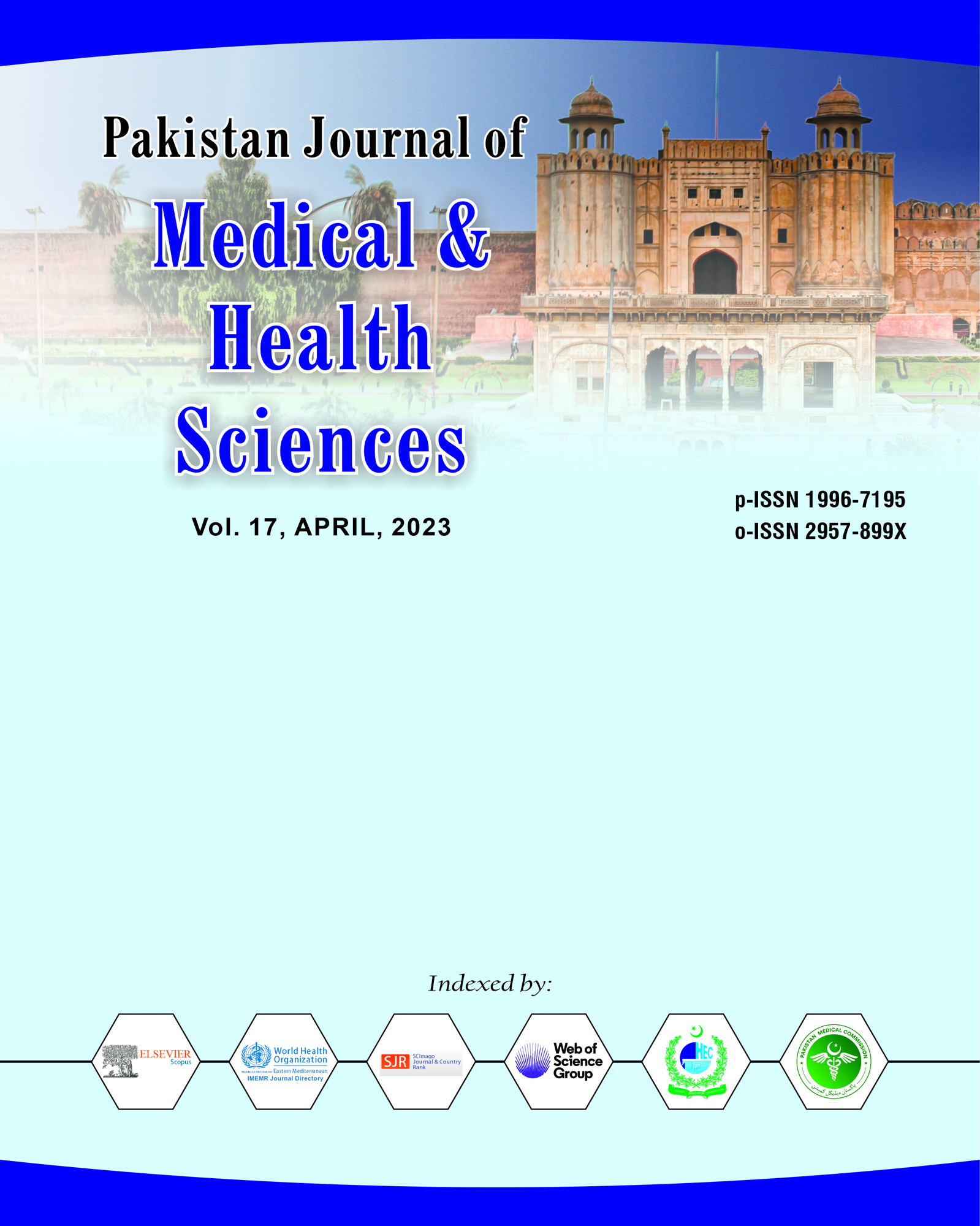Computed Tomography (CT) Angiography in the Diagnosis and Management of Stroke Patients in Pakistan. A Retrospective Analysis
DOI:
https://doi.org/10.53350/pjmhs2023174728Abstract
Background: Stroke is a major cause of mortality and long-term disability worldwide and this burden is especially high in the Pakistani setting due to the increasing burden of cardiovascular risk factors and inadequate healthcare resources. Computed tomography (CT) angiography provides rapid visualization of cerebral vasculature and is capable of early detection of large vessel occlusions and evaluation of collateral circulation, which are important for timely decision-making in acute ischemic stroke.
Methods: A retrospective study was conducted at a tertiary care centre in Pakistan during June 2021 to august 2022 , involving n=110 consecutive patients of 18 years and older, with a clinical diagnosis of acute ischemic stroke and who underwent CT angiography within 24 hours of symptom onset. Patients with contraindications to iodinated contrast agents, incomplete imaging, or clinical data, were excluded. Vascular risk factors and time to imaging intervals were extracted from hospital records and demographic and clinical data. Two experienced neuroradiologists independently reviewed CT angiographic images, and in cases of discrepancy, consensus was achieved. Modified Rankin Scale (mRS) score at discharge was evaluated; an mRS score less than or equal to 2 was considered a favorable outcome. The associations between imaging findings and clinical outcomes were assessed by statistical analysis.
Results: The study population as a whole was 62 ± 10 years of age and nearly equally balanced between males and females. The large vessel occlusions were seen in 48.2% of patients by CT angiography, and the collateral circulation was found to be good in 30%, moderate in 40%, and poor in 30% of cases. Good collateral circulation, early imaging (defined as in the first 6 hours of symptom onset), and early recanalization (defined as within 24 hours of symptom onset) were significantly associated with favorable outcomes at discharge (p = 0.03, p = 0.02, and p = 0.01, respectively). The overall in-hospital mortality rate was 15.5%.
Conclusion: In the acute management of ischemic stroke in Pakistan, CT angiography is a very useful diagnostic tool. Early imaging and robust collateral circulation are important predictors of favorable clinical outcomes, and thus prompt diagnostic evaluation is critical in resource-constrained settings to optimize patient management and improve prognosis, the study findings indicate.
Keywords: Stroke, CT angiography, Acute ischemic stroke, Collateral circulation, Pakistan, Retrospective analysis
Downloads
How to Cite
Issue
Section
License
Copyright (c) 2023 Binish Zaidi, Shereen Rafiq, Muhammad Imran Akhtar, Said Majeed, Nooshin Akhtar, Saba Masud

This work is licensed under a Creative Commons Attribution 4.0 International License.


